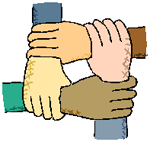News
2015? 2050? Ever?
Sep 20, 2008
 In a unique and heartening display of unanimity and cooperation, the nations of the world came together in 2000 and signed the United Nations Millennium Declaration, pledging to “spare no effort to free our fellow men, women, and children from the abject and dehumanizing conditions of extreme poverty.”1 Their blueprint for ending world poverty by 2015 consisted of eight goals:
In a unique and heartening display of unanimity and cooperation, the nations of the world came together in 2000 and signed the United Nations Millennium Declaration, pledging to “spare no effort to free our fellow men, women, and children from the abject and dehumanizing conditions of extreme poverty.”1 Their blueprint for ending world poverty by 2015 consisted of eight goals:
- Eradicate extreme poverty and hunger
- Achieve universal primary education
- Promote gender equality and empower women
- Reduce child mortality
- Improve maternal health
- Combat HIV/AIDS, malaria, & other diseases
- Ensure environmental sustainability
- Develop a global partnership for development
Predictably, the least progress has been shown in areas affecting women. Half a million prospective mothers die annually in childbirth or of complications from pregnancy. Women are drastically underrepresented in government. Most employed women are in vulnerable jobs or are unpaid family workers. Additionally, sub-Saharan Africa is a virtual basket case, where the primary goal of reducing poverty by one-half by 2015 will almost surely not be met. The area also shows much slower progress meeting the other seven goals. And carbon dioxide emissions have continued to increase, despite the clear and present danger they pose.
“The single most important success to date has been the unprecedented breadth and depth of the commitment to the [Millennium Development Goals (MDGs)].”2 Therein lies our greatest hope. The MDGs are a framework around which we can coordinate a full-court assault on the perils that face life on earth. Increasingly, governments, foundations, NGOS, and civil societies are rallying around that framework. Perhaps by 2015, even if those goals are not met, we will have crafted an alliance which—all together now—can meet those goals in a generation or two.
____________________
1 Millennium Development Goals Report 2008, pg. 3
2 Op cit., p. 4
Copyright © 2008 All Together Now.